The cylindrical apartment building, also known as the “Round House” or “Krugovaya Zastava,” is a distinctive example of Soviet-era architecture in Moscow, Russia. It was designed by architects Eugene Stamo and Aleksandr Markelov and constructed in 1972.
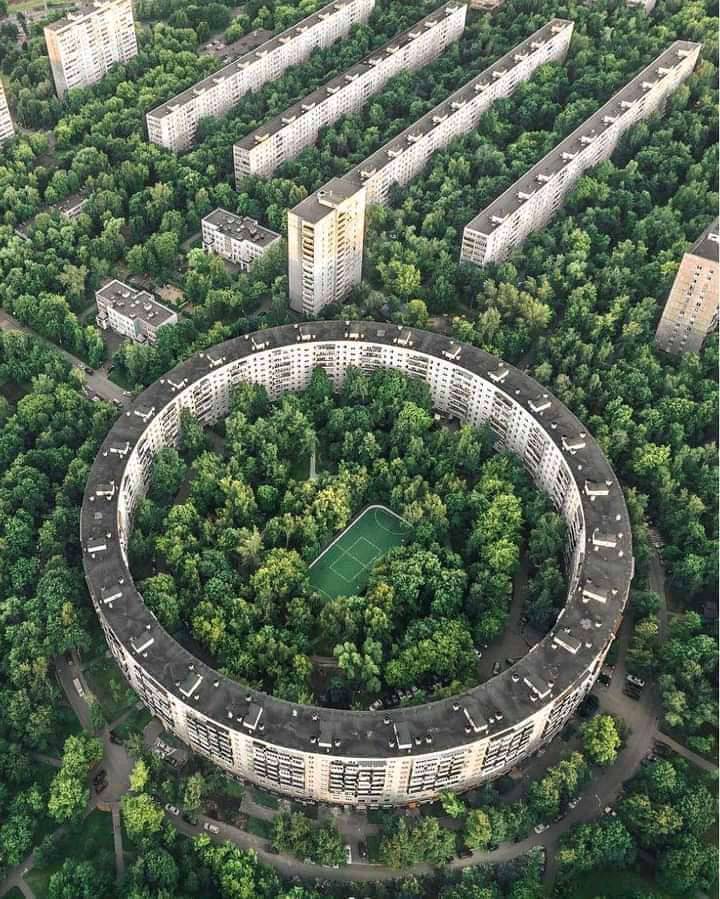
At the time of its construction, the Round House was considered a bold and innovative project. Its cylindrical shape and prefabricated concrete panels were an unusual departure from the traditional rectangular apartment blocks that dominated Soviet housing construction. The building’s design was intended to maximize living space while minimizing the amount of land needed for construction.
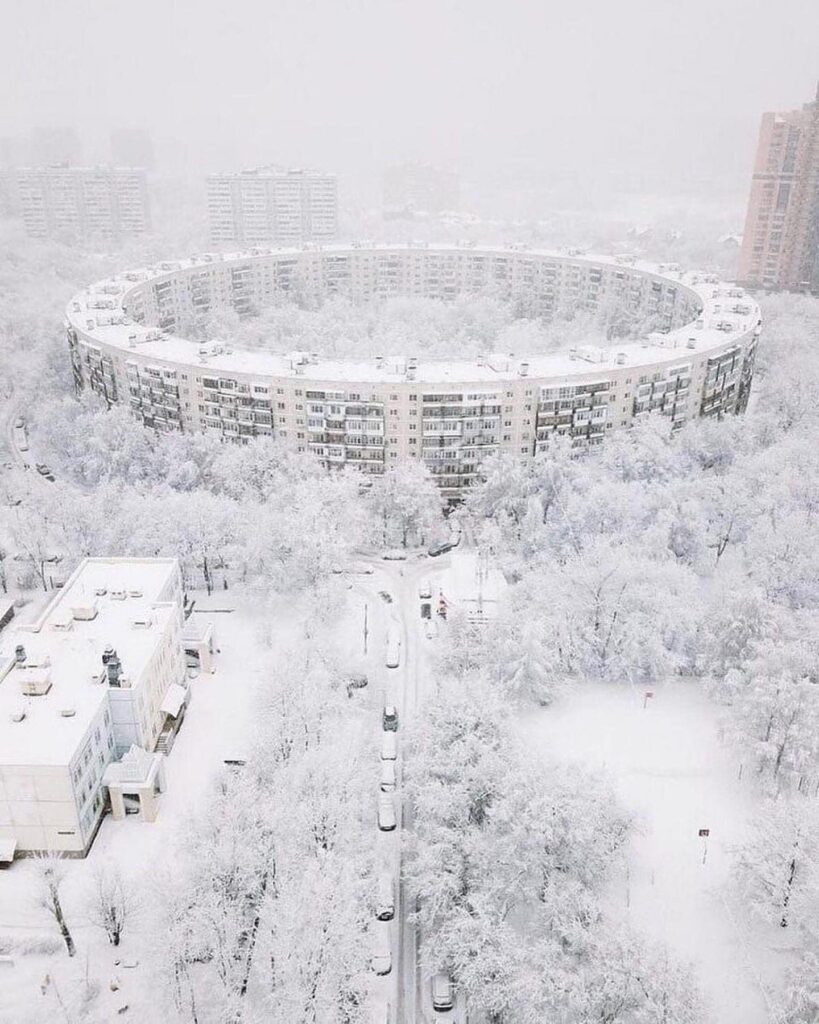
Despite its unique design, the Round House was not without its problems. The small size of the apartments, lack of amenities, and poor sound insulation made it a less than ideal living environment for many residents. In addition, the building’s circular shape made it difficult and expensive to maintain.
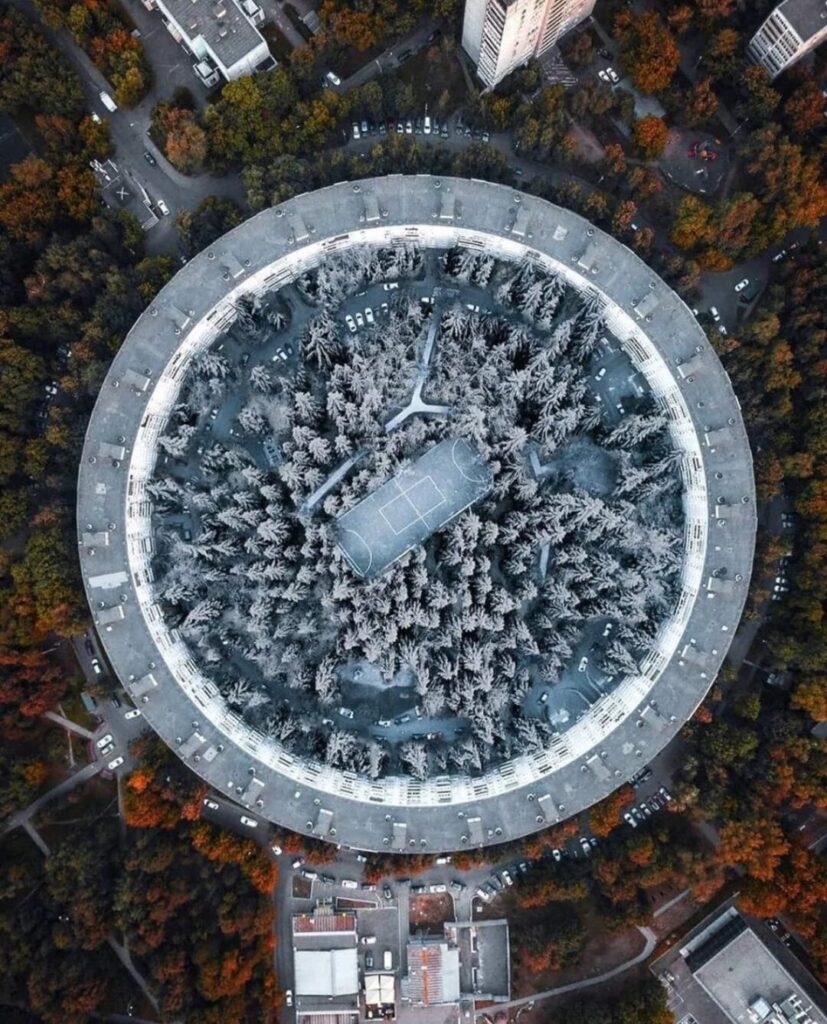
Despite the issues with the Round House, it remains a popular and iconic example of Soviet-era architecture in Moscow. Its unique design and prominent location have made it a recognizable landmark of the city, and it continues to be a source of fascination for both locals and tourists.
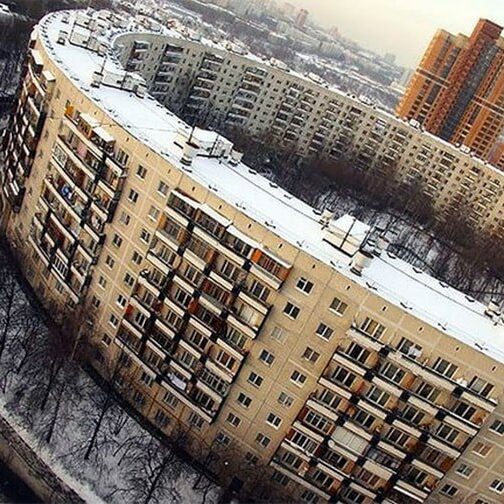
In recent years, efforts have been made to modernize and improve the building, including the installation of modern elevators and the renovation of some of the apartments.
Additionally, the Round House has been the subject of various artistic and cultural projects, including photography exhibitions, film screenings, and public art installations. While it may not be the most comfortable or luxurious living environment, the Round House is an important piece of Moscow’s architectural history and a testament to the innovative spirit of Soviet-era design.
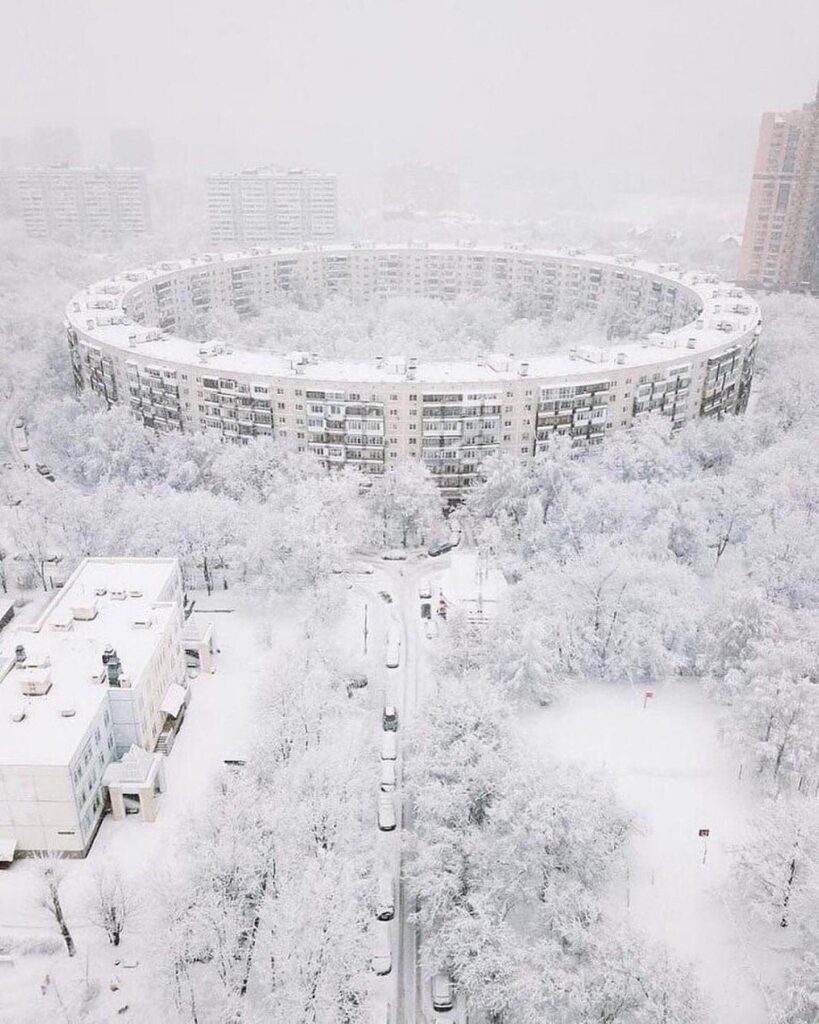
A Look Inside the Tower – What it’s Like to Live & Work in this Unique Structure
The building is a unique structure that has garnered attention from architects and residents alike. This 27-story building, called the “Round House,” was built in the late 1960s and features 703 apartments, as well as office spaces and commercial areas.
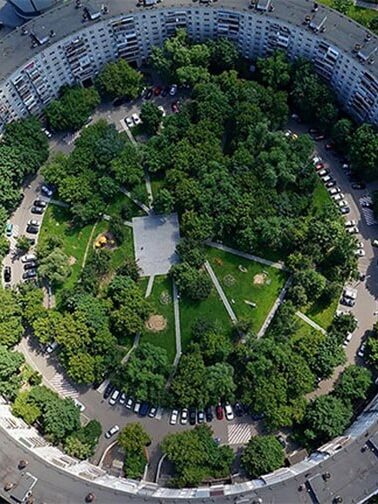
Living in the Round House offers a one-of-a-kind experience. The apartments are designed in a circular layout, with curved walls and windows that offer panoramic views of the city. The shape of the building also allows for natural light to filter into every apartment, creating a bright and airy atmosphere.
Residents of the Round House also enjoy a variety of amenities, including a fitness center, a grocery store, and a beauty salon. Additionally, the building is located near public transportation and is within walking distance of several shops and restaurants.
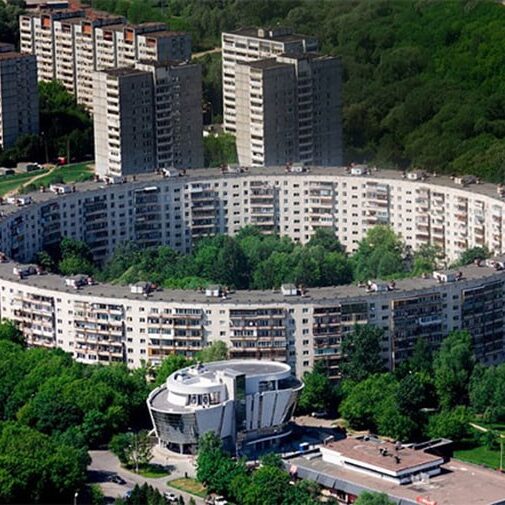
For those who work in the Round House, the building’s unique design offers a creative and inspiring environment. The curved walls and unique angles create a sense of movement and energy, making it an ideal space for artistic and innovative endeavors.
The Design Process Behind this Unusual Building & How it was Constructed
The “Round House,” was designed by architect Eugene Stamo and constructed between 1968 and 1972. The design process for this unique building was a complex and innovative endeavor that required extensive planning and engineering.
Stamo’s inspiration for the Round House came from the idea of creating a building that would stand out from the typical rectangular structures in Moscow. He envisioned a cylindrical building that would create a sense of dynamism and movement, while also maximizing the amount of natural light that could filter into every apartment.
The construction of the Round House required a unique approach due to the building’s circular design. The engineers had to find a way to distribute the weight of the building evenly, which required a complex system of supports and beams. The building’s foundation also had to be specially designed to accommodate the circular shape, with an intricate system of reinforced concrete rings.
The apartments themselves were designed to be spacious and functional, with curved walls that create a sense of openness and flow. The windows in each apartment are positioned at an angle, which not only allows for breathtaking views of the city but also helps to maximize the amount of natural light that enters the space.
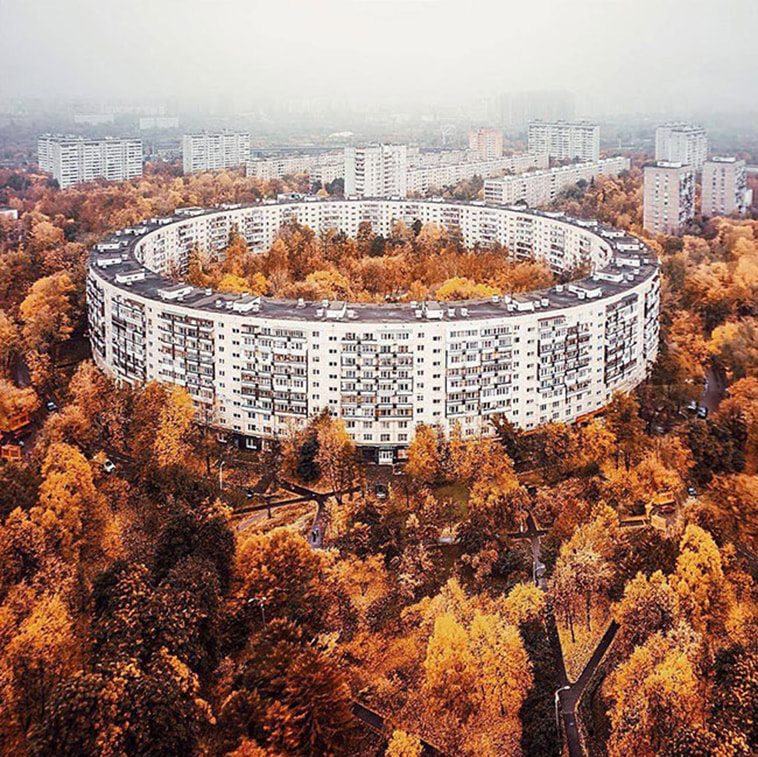
Today, the Round House remains a landmark in Moscow and a testament to the innovative and creative spirit of its designers and engineers. Its cylindrical design has influenced many other buildings around the world, and it continues to be a popular place to live and work in the heart of the city.

